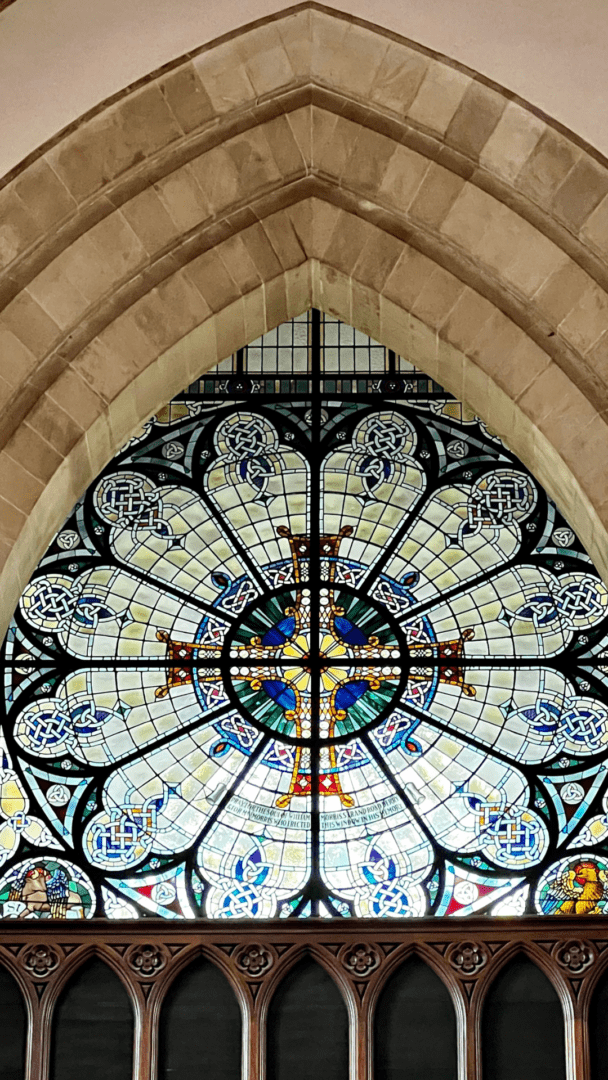Our day trip to Derry, Northern Ireland’s walled City, is one of the top highlights of our Ireland vacation. Derry’s walls are probably its most famous attraction, although Derry is also the site of Northern Ireland’s infamous Bloody Sunday.
This article is now featured on GPSmyCity. To download this article for offline reading or travel directions to the attractions highlighted in this article, go to Walking Tours and Articles in Londonderry on GPSmyCity.
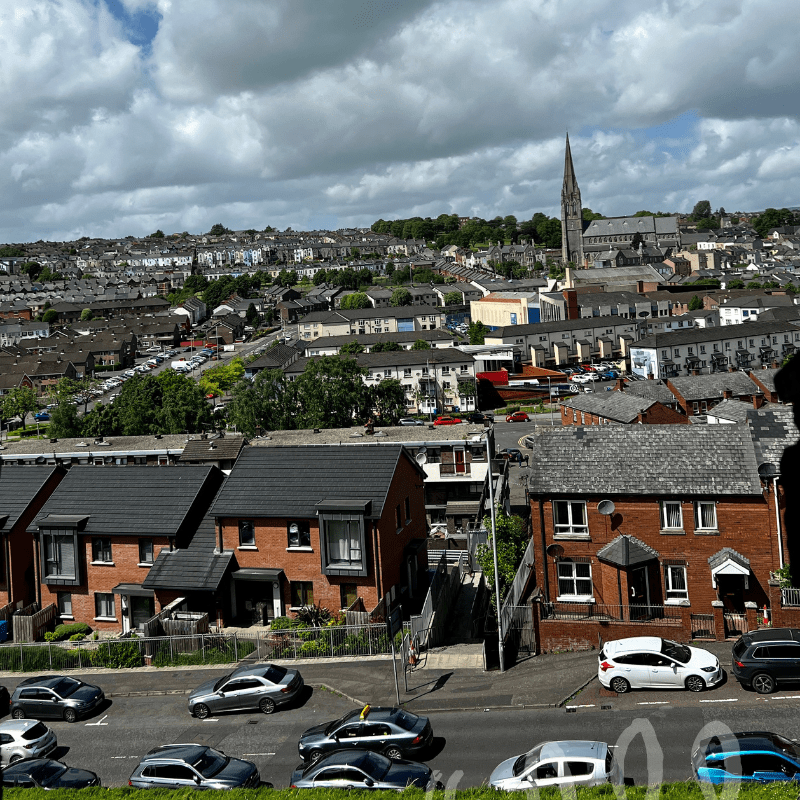
View of Derry as seen from the top of the City Wall
Although we rarely take guided walking tours on our travels, we would have learned more about the history of Derry if we had a guide to help us along on our meandering walk through the City. I recommend booking one of the many available guided tours offered in Derry.
We encountered several different walking tours, especially in the Bogside area, where Bloody Sunday occurred.
Steve and I had difficulty finding a place to park in the center of town and, once finally parked, decided to walk through the City to explore these sites. We experienced a lot of uphill walking but very little downhill walking. How did that happen?
Walled City
Derry, also called Londonderry, is now the only City in Ireland surrounded by City Walls. These Walls, built in the 17th Century as a defense structure, are over 400 years old, have never been breached, and famously withstood a 105-day siege in 1689.

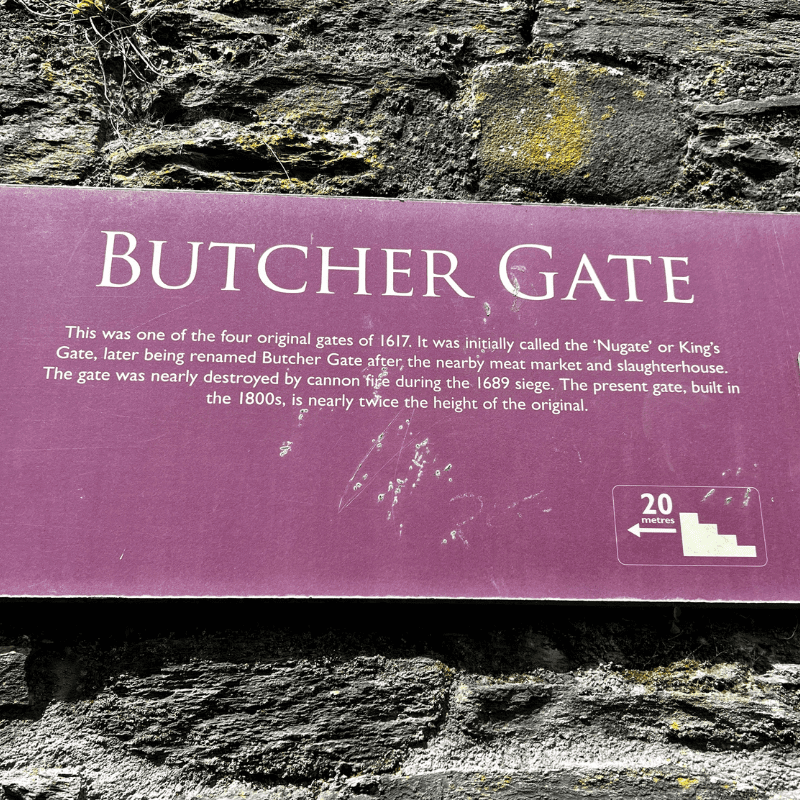
Butcher Gate
The Walled City of Derry has seven gates. Four are original, and three others were added between 1790 and 1888. We only walked on a small portion of the Walls and saw Butcher Gate and one of the newer ones, Castle Gate.


Castle Gate
As we walked that short distance on the Wall, I was amazed to see how sturdy and solid it is today. While standing on the Wall, you can see beautiful scenes of the City and well beyond in any direction.
The Troubles and Bloody Sunday
The growing conflict between Catholics and Protestants in Northern Ireland became known as The Troubles and started in the late 60s. The Troubles ended due to the historic peace treaty known as the Good Friday Agreement of 1998.
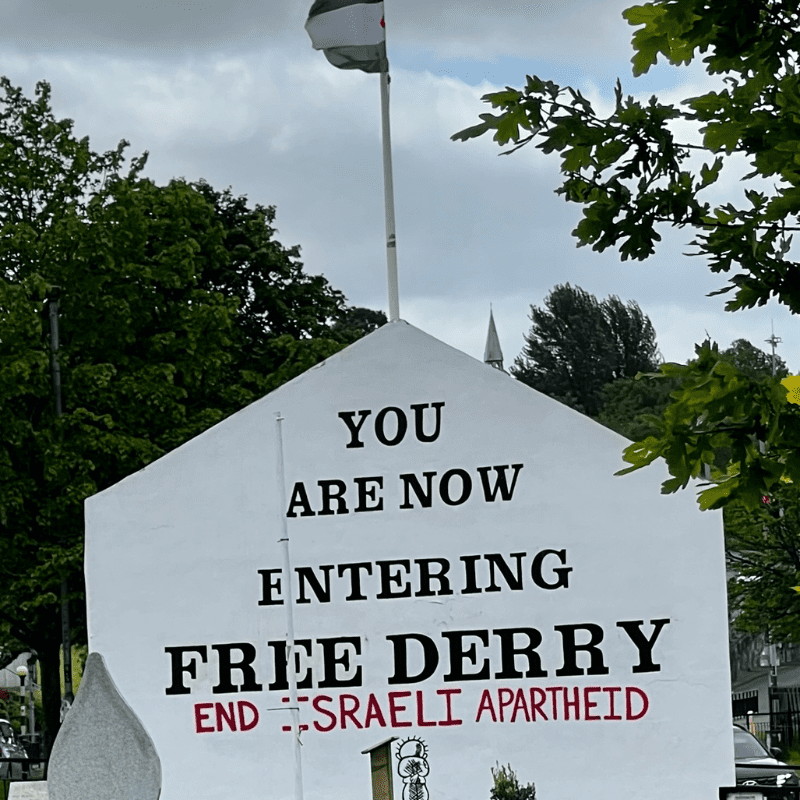
Today, this familiar sign is recognized worldwide as a symbol of resistance and civil rights, although it changes with the times.
The most infamous event in Derry’s history is the 1972 Bloody Sunday massacre, when the British army fired into a civil rights march and killed 14 unarmed protestors, thus adding fuel to Northern Ireland’s strained Troubles.
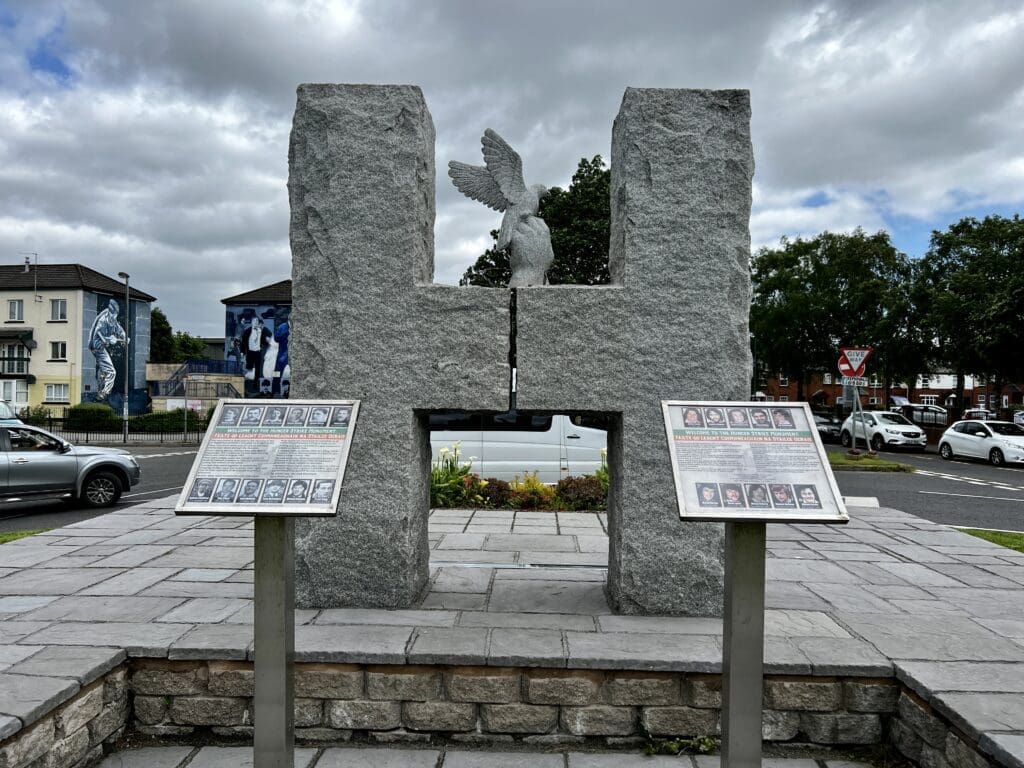
This is a memorial to the 1981 Hunger Strike during The Troubles, during which ten people died. The monument is shaped like an H.
Derry has a rather dark and troubled history, but today, fifty years later, it is healing from its frightful historical events and has a positive and hopeful future. This day is by far our most somber day as tourists.
The events of Bloody Sunday and The Troubles are displayed along Rossville Street, in the predominantly Catholic area known as Bogside, in the form of wall-sized murals. Local artists known as the Bogside Artists are responsible for this thought-provoking artwork.
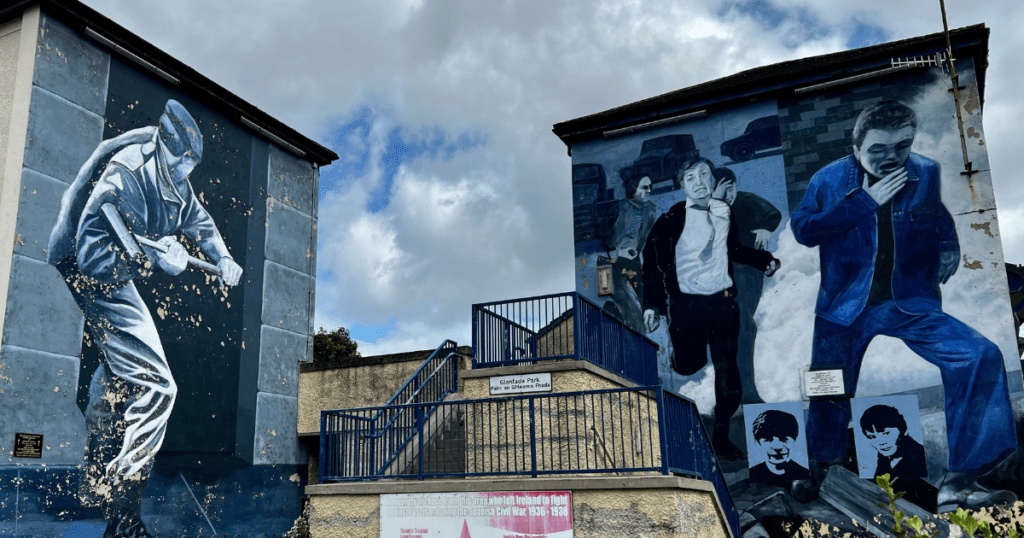
Operation Motorman and The Runner, by Bogside Artists
Museum of Free Derry
As we often do, we just happened upon this historical and informative museum and clearly understood Bogside, The Troubles, and Bloody Sunday. The museum illustrated the inequities that led up to the violence of The Troubles and Bloody Sunday.
What an emotional experience at this unique museum! It is operated mainly by family members and friends of those who lost their lives on Bloody Sunday. The complete story of Bloody Sunday is told here in the exhibits on display.
The Siege Museum
The Siege Museum displays exhibits related to the Siege of Derry and the Apprentice Boys of Derry. It consists of three floors. The first floor includes the introductory history of the area; the second floor covers the Derry Boy Ambassador groups; the third floor is about the famine.
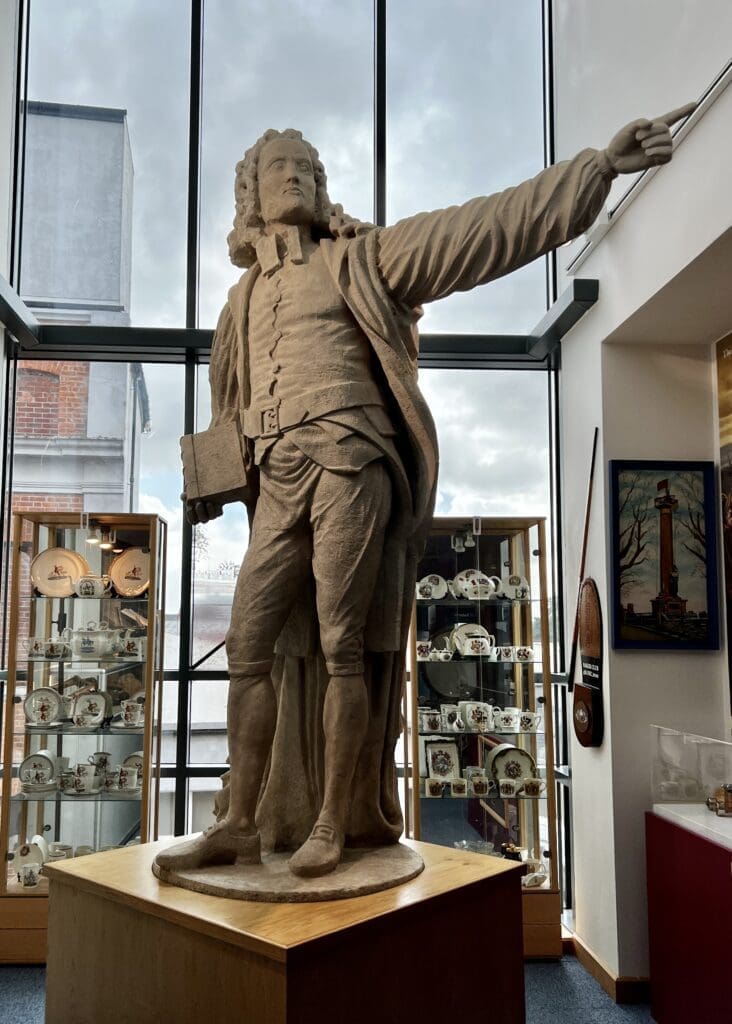
During the 1689 Siege of Londonderry, while the City leaders hesitated to take action, thirteen Apprentice Boys took it upon themselves to save the City by closing all the City gates as James VII and II approached to attack it. The Siege lasted 105 days.

Probable menu board during the Siege
Although the City successfully broke the Siege, as many as 10,000 people died from hunger and disease inside the City Walls. The City commemorates the gates being closed in a ceremony on the first Saturday of each December.
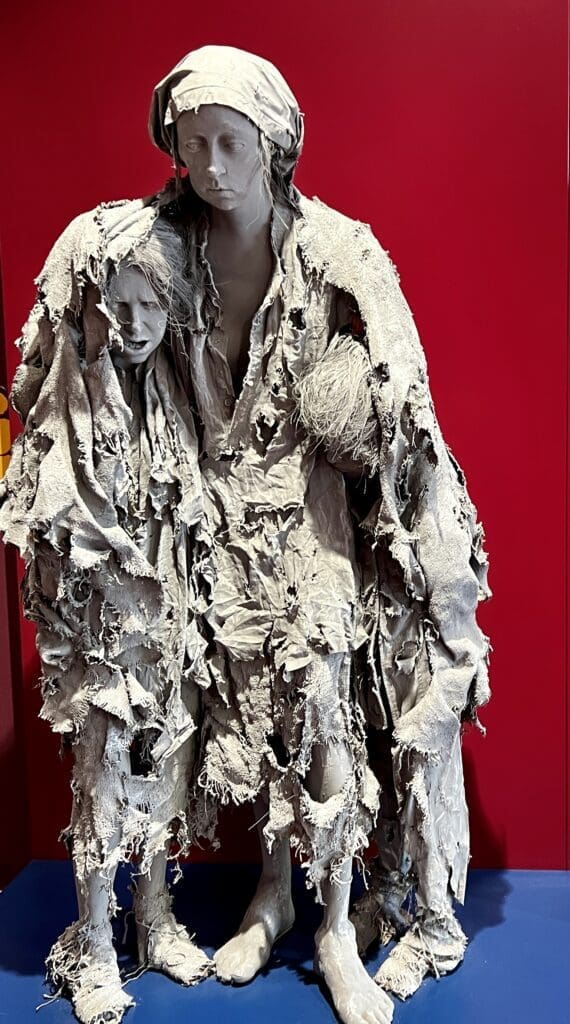
Sculptures of famine victims
Today, the Apprentice Boys of Derry has a protestant membership of over 10,000 and is a well-known and respected fraternal organization.
St. Eugene Cathedral
The building of this Cathedral began in 1851. A curious story is that although the Cathedral bells ring at 8:00 a.m., 12:00 p.m., and 6:00 p.m. each day, they also ring at 9:00 p.m. in remembrance of laws that once prohibited Catholics from attending mass and reminding them of their 9:00 p.m. curfew.

St. Eugene Cathedral
St. Eugene’s Cathedral is a beautiful Gothic-style Catholic cathedral. Its entrance is at the base of a 256-ft. spire, and there is a lovely Rose Window at the western end of the nave.
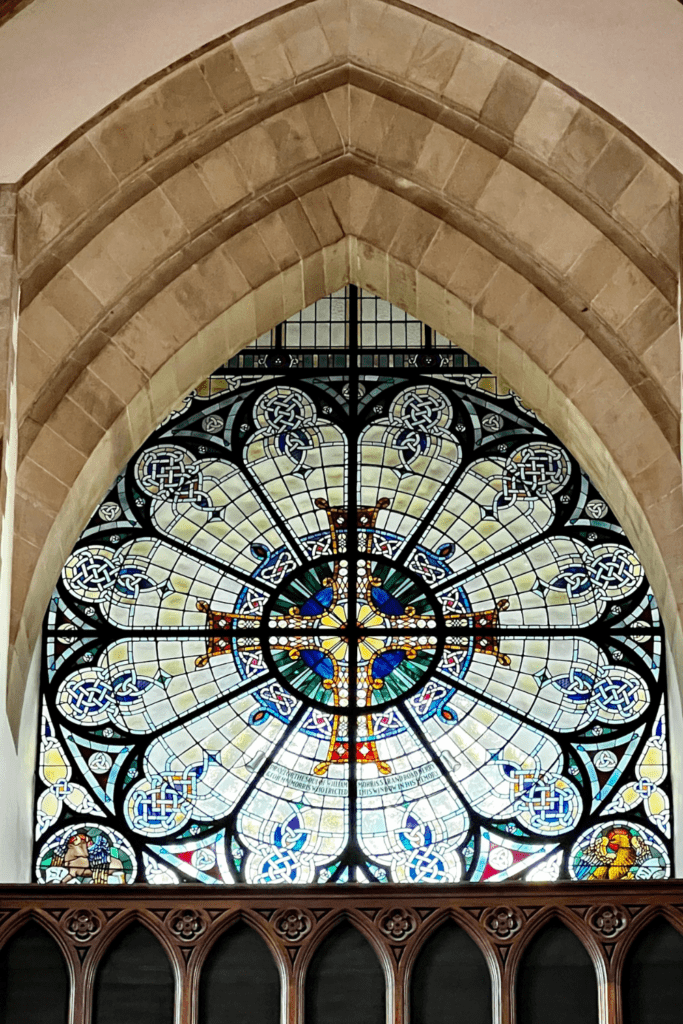

St. Columb Cathedral
St. Columb’s Cathedral was locked, so we could only walk around the grounds and take a few photos. A Cistercian Nunnery once stood where St. Columb is today. Built in 1633, this cathedral is the oldest building in Derry today.

St. Columb Cathedral
We encountered an obelisk monument called the Siege Hero Mound, although no Siege victims are buried here.
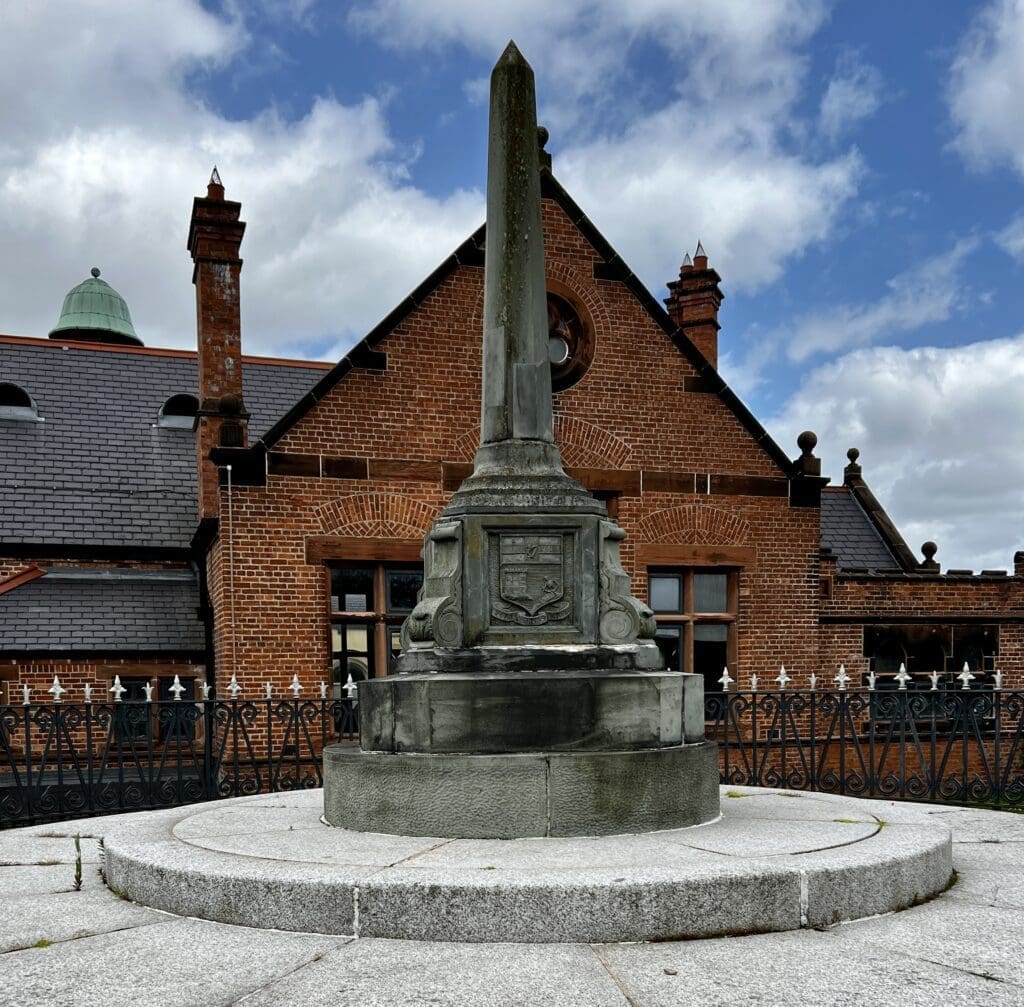
Presbyterian Church
This visit was our favorite experience in Derry. The personable and remarkable storyteller Walter Campbell greeted us as we wandered into the front door of the Presbyterian Church to see what we could see. Mr. Campbell shared so many fascinating stories about his Church’s history.

Mr. Campbell and his pals waving from the front of the Presbyterian Church
This Church was built in 1780 and is on the site of another Church built in 1690. After the discovery of extensive dry rot, a restoration of the Church refurbished the Church to its 1780 appearance.
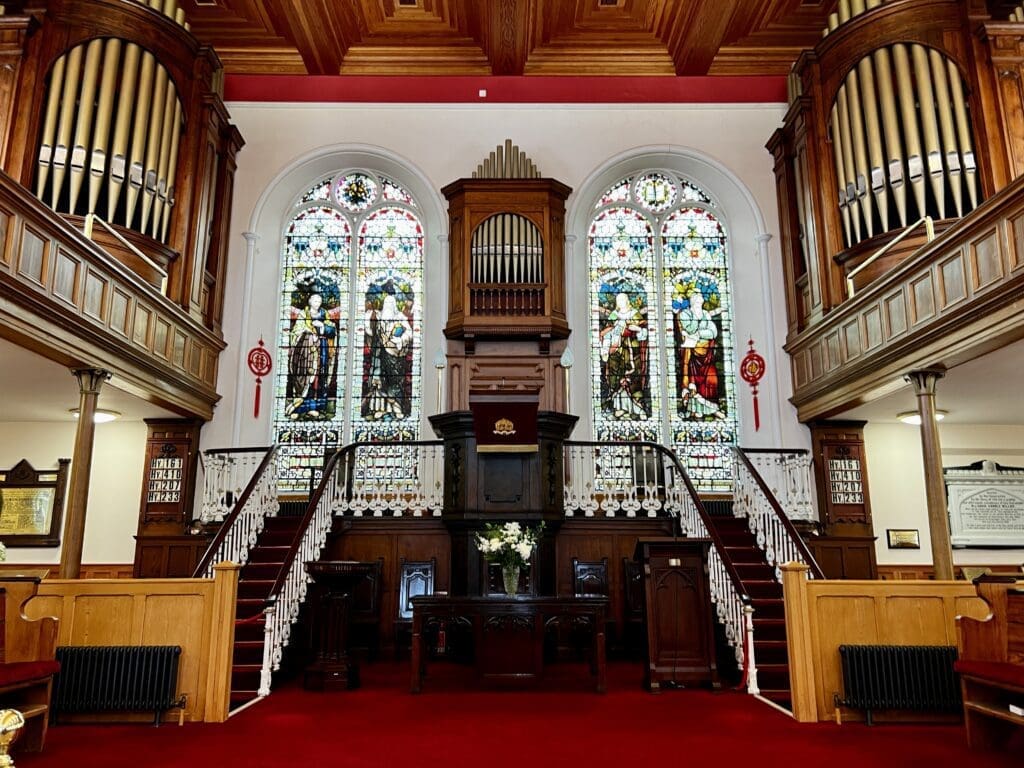
Presbyterian Church
The Blue Coat School Visitor Centre is a secret little bonus museum behind the Presbyterian Church. The Visitor Centre exhibits relate to the story of Northeastern Ireland’s Presbyterian Church beginning in the 1600s.
This Presbyterian Church gets my vote as the do-not-miss site in Derry. This stunning Church has a beautiful ornate tiled floor, a beautiful wood-carved ceiling, and impressive stained glass windows. You will be delighted if you are fortunate enough to run into Mr. Campbell.

Beautiful Presbyterian Church
These are only the highlights of our day in Derry. This town has so much history to discover and learn about, but it is also a thriving, busy modern city with many shops and tasty restaurants. We love to see history, but we also enjoyed some great food here and met delightful people.
- A day trip exploring Ireland
- Ancient history in County Louth
- Seaside charm, leprechauns, and history
- Nine things to see in Downpatrick, Northern Ireland
- Why do we keep returning to Ireland?
- Must-know tips before traveling to Ireland
- Ireland has its hooks in me!
- Ireland – Making a Plan
